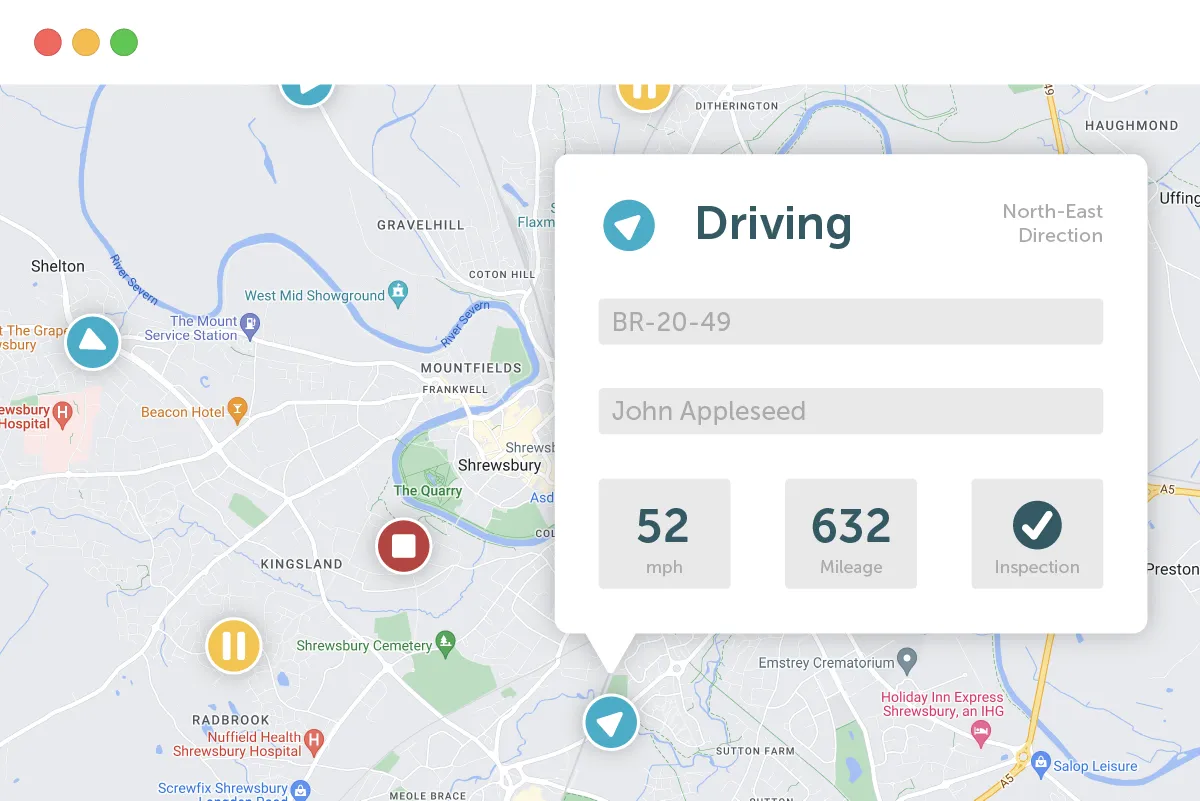Whether managing a small fleet of vans or a large fleet of trucks, a tracking system can help to stay on top of the company’s mobile assets. This post explores the benefits of tracking systems, the different types of systems available, and how to choose the right system for a particular business. It will also cover the implementation and integration, training and support, and tips for getting the most out of a tracking system.
Whether managing a small fleet of vans or a large fleet of trucks, a tracking system can help to stay on top of the company’s mobile assets. This post explores the benefits of tracking systems, the different types of systems available, and how to choose the right system for a particular business. It will also cover the implementation and integration, training and support, and provide tips for getting the most out of a tracking system.
Tracking System Overview
A tracking system is an electronic device that uses GPS technology to determine the location of a vehicle or asset. The GPS device receives signals from satellites orbiting the Earth and uses these signals to triangulate its position. That position can then be recorded in the vehicle and reported remotely to the depot. The device communicates with a central server using cellular or satellite networks to transmit its location and other data.
The data collected by the tracking system includes information on the location of the vehicle, its speed, direction of travel, and any stops or idling time. In modern systems, this data is transmitted to the central server, where it can be viewed by the fleet manager using a web-based dashboard or mobile app.
Some tracking systems also provide data on other aspects of the vehicle, such as fuel consumption, engine diagnostics, and maintenance reminders. This data can be used to improve fleet efficiency, reduce maintenance costs, and extend the life of a vehicle.
Tracking systems can be installed on any type of vehicle or asset, including a car tracking system, a van tracking system, trucks, trailers, and construction equipment. They can also be used to track high-value mobile assets like generators, pumps, and other equipment that is often left unattended.
The vehicle tracking system device itself is usually a small, compact unit that can be discreetly installed in the vehicle or asset being tracked. The device can be hardwired into the vehicle’s electrical system or plugged into the vehicle’s OBD-II port.
Overall, whether a vehicle or asset tracking system, these devices are powerful tools for fleet management, allowing fleet managers to monitor the real-time location and behaviour of their vehicles. By providing detailed information on vehicle location, behaviour, and performance, a tracking system can help businesses improve efficiency, reduce costs, and enhance safety.
Start Tracking Your Fleets
Get started with Fleet Tracking from FleetGO. You will have a complete overview of your fleet. See the GPS location of your drivers in real-time and optimes your operations.
Manage your Fleet on the GO

Benefits of a Tracking System
Fleet tracking systems offer businesses numerous benefits, including:
- Improved Fleet Efficiency: By monitoring the location and behaviour of each vehicle, fleet managers can optimise routes, reduce idle time, and improve fuel efficiency. This leads to a reduction in operational costs, as well as a decrease in the carbon footprint of the fleet.
- Enhanced Safety: Tracking systems can alert fleet managers to potential safety issues, such as speeding or harsh braking, allowing them to take corrective action and reduce the risk of accidents. This leads to a safer fleet and a reduction in the costs associated with accidents, such as insurance premiums and vehicle repairs.
- Better Customer Service: With real-time data on vehicle location, fleet managers can provide customers with accurate arrival times and improve overall customer satisfaction. This can help businesses retain customers and increase revenue.
- Asset Protection: Tracking systems can be used to monitor the location and movement of high-value assets. They help reduce the risk of theft and increase recovery rates in case of theft, which leads to a reduction in losses associated with stolen assets.
- Cost Savings: By reducing fuel consumption, optimising routes, and improving overall fleet efficiency, tracking systems can help businesses save money on fuel costs and vehicle maintenance. This results in an increase in profitability and a competitive edge in the market.
Types of Tracking Systems
Tracking systems are available for all types of vehicles. There is not much practical difference between, for example, an assets tracking system and a tracking system for cars or trucks. However, in terms of the way they operate, there are several types of tracking systems, including:
- Cellular-Based Tracking Systems: These systems use cellular networks to transmit data from the vehicle to the central server. They are often less expensive than satellite-based systems, but coverage in remote areas may be limited. They are ideal for businesses with fleets primarily operating in urban or suburban areas.
- Satellite-Based Tracking Systems: These systems use satellite networks to transmit data from the vehicle to the central server. They offer wider coverage than cellular-based systems but may be more expensive. These systems are ideal for businesses with fleets that operate in remote or rural areas.
- Hybrid Tracking Systems: Hybrid systems use a combination of cellular and satellite networks to transmit data, offering the best of both worlds in terms of coverage and cost. They are ideal for businesses with fleets that operate in a variety of locations.
- Plug-and-Play Tracking Systems: These are designed to be easy to install and can be plugged into the vehicle’s OBD-II port. They are ideal for small fleets or individual vehicles. These systems are less expensive than traditional hardwired systems and can be easily moved from one vehicle to another.
Choosing the Right System
When choosing a tracking system, it’s important to consider the specific needs of the business. Factors to consider include:
- Fleet Size: Larger fleets may require more sophisticated systems with advanced reporting and analytics capabilities, whereas smaller fleets may be able to get by with simpler systems.
- Vehicle Types: Different types of vehicles may require different types of tracking systems. For example, off-road vehicles may require more rugged systems than passenger cars. Similarly, heavy-duty vehicles like trucks may require systems with more advanced features, such as engine diagnostics and maintenance reminders.
- Budget: Tracking systems can vary widely in price, so it’s important to choose a system that fits within the budget. Though the initial cost is an important consideration, it’s important to remember that investing in a quality system can result in significant long-term cost savings.
- Features: Consider what features are most important to the business, such as real-time tracking, geofencing, or driver behaviour monitoring. While more advanced features may come with a higher price tag, they can also provide significant benefits in terms of fleet management and cost savings.
Implementation and Integration
Implementing a tracking system involves installing the tracking hardware on each vehicle, as well as configuring the software and setting up the web-based dashboard or mobile app. Fleet managers should work closely with the tracking system provider to ensure that the system is installed and configured correctly.
Integration with other fleet management systems, such as maintenance and dispatch systems, is also important. A well-integrated system can provide a seamless flow of data between systems, allowing for better decision-making and more efficient fleet management.
Training and Support
Training and support are important considerations when implementing a tracking system. Fleet managers and drivers should receive comprehensive training on how to use the system and interpret the data provided. Ongoing support from the tracking system provider is also important to ensure that any issues or questions are addressed in a timely manner.
Conclusion
Fleet tracking systems are an essential tool for modern fleet management. By providing real-time data on vehicle location, behaviour, and performance, these systems can help businesses improve efficiency, enhance safety, and reduce costs. With a wide range of systems available, it’s important to choose a system that meets the specific needs of the business and budget. Implementation and integration, as well as training and support, are also important considerations for a successful tracking system implementation.
Sources:
Disclaimer
This content is provided for informational purposes only and is not meant to be an endorsement or representation by FleetGO.com or any other party. This information may contain inaccuracies or typographical errors, despite our efforts to ensure accuracy. FleetGO.com accepts no responsibility or liability for any errors or omissions, and is not responsible for the contents of any linked website or any link contained in a linked website. Please refer to our full disclaimer for more details.


